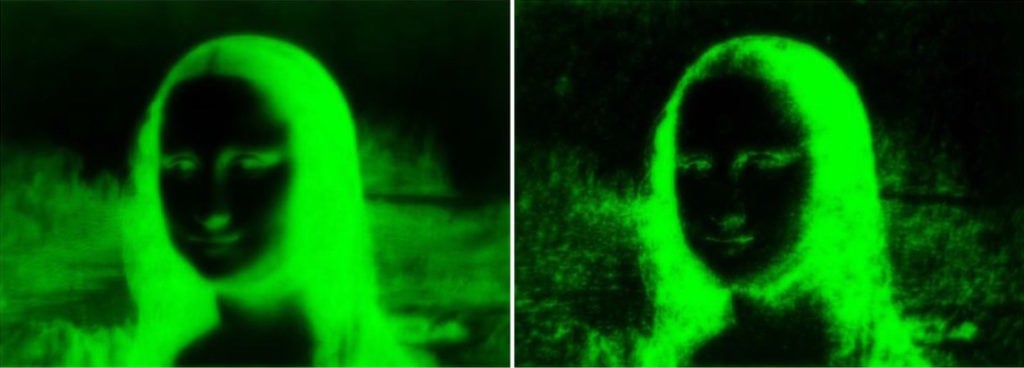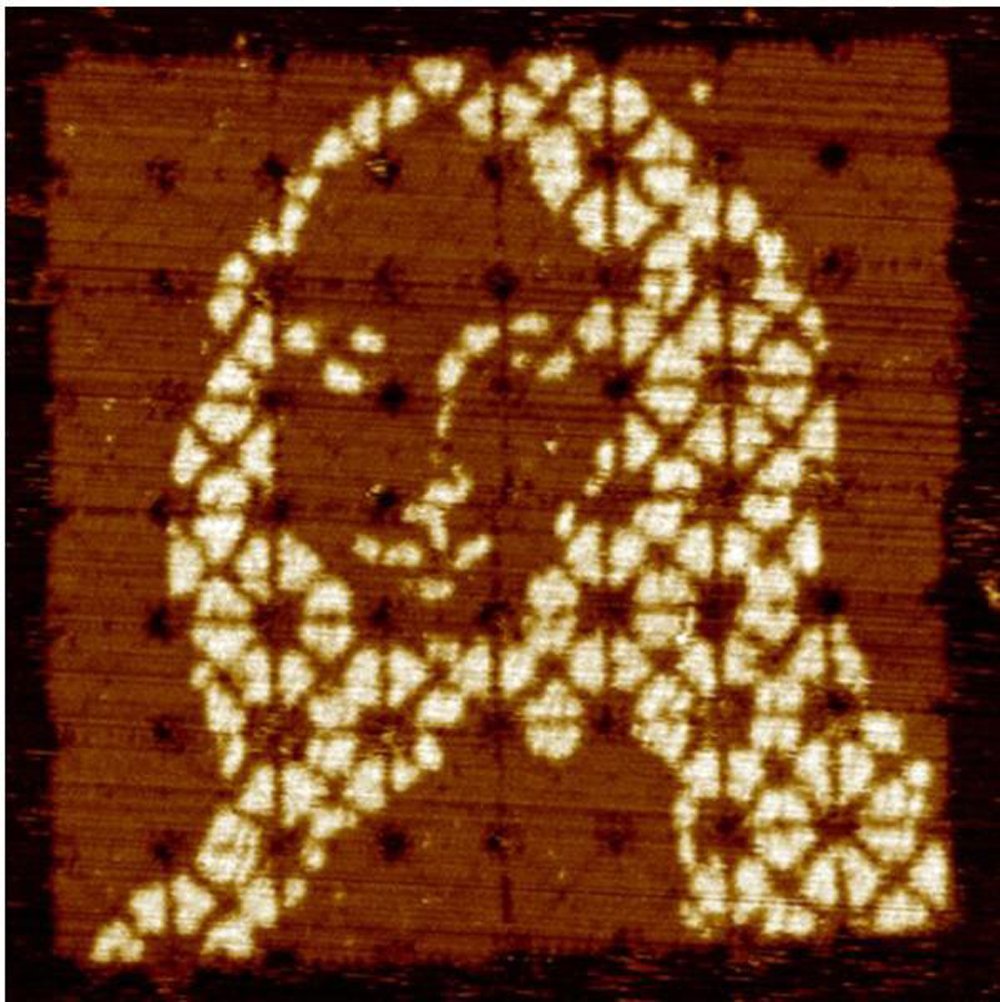Art World
This Microscopic E. Coli ‘Painting’ Just Might Make You Sick of the Mona Lisa—Literally
The researchers hope the project could also have useful applications for controlling large populations of bacteria.

The researchers hope the project could also have useful applications for controlling large populations of bacteria.

Sarah Cascone

A team of Italian scientists have discovered a surprising artistic use for E. coli, the bacteria that causes food poisoning. Researchers at Sapienza Università di Roma’s Institute of Nanotechnology genetically altered the bacteria’s light sensitivity in order to control its movement and direct it into the shape of a microscopic Mona Lisa.
While a tiny Mona Lisa is fanciful, the scientific breakthrough could also have useful applications in the future for controlling large populations of bacteria, the researchers wrote in the study, “Dynamic density shaping of photokinetic E. coli,” recently published in eLIFE. They could, for example, learn to build microscopic transport devices or to 3-D print on a microscopic level using bacteria.
E. coli bacteria can swim very quickly—10 times its length in a single second—but the tail-like flagellum that controls their movement is normally fueled by oxygen. To make the bacteria run on light instead, the Italian scientists spliced a recently discovered protein, proteorhodopsin, into the bacteria, essentially creating a solar panel.
Experimenters then projected a microscopic black-and-white negative image Leonardo’s Mona Lisa onto the bacteria. Within four minutes, most of the E. coli had flocked to the darker areas, leaving only a few bacteria to move quickly through the brighter regions, creating a passable reproduction of the Renaissance masterpiece.

Scientists grew this portrait of Leonardo da Vinci’s Mona Lisa from genetically altered, light-sensitive E. coli bacteria. Photo courtesy of the Università di Roma “Sapienza”, Italy; Institute of Nanotechnology (NANOTEC-CNR), Italy.
“Much like pedestrians who slow down their walking speed when they encounter a crowd, or cars that are stuck in traffic, swimming bacteria will spend more time in slower regions than in faster ones,” said Giacomo Frangipane, a physicist and the study’s lead author, in a statement. “We wanted to exploit this phenomenon to see if we could shape the concentration of bacteria using light.”
The experiment also made E. coli portraits of Albert Einstein and Charles Darwin using the photokinetic cells, to symbolize the project’s embrace of both biology and physics.

A microscopic copy of the Mona Lisa created using DNA origami. Photo courtesy of the Qian laboratory.
Meanwhile, scientists at Pasadena’s Caltech announced this past December that they had reproduced the Mona Lisa on DNA tiles by manipulating strands of genetic code through DNA origami. The result was a .5-micrometer-square image of the famous painting. That’s almost unimaginably tiny, the size of a single E. coli bacterium—but still the largest DNA origami structure ever-made.